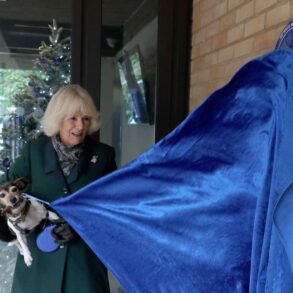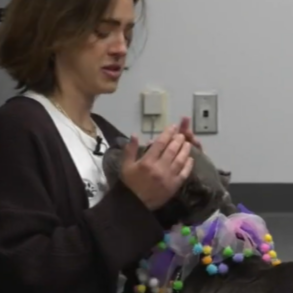When May-lee Chai was in high school in the early 1980s, a Chinese restaurant finally opened in the small South Dakota town where her family lived.
“The food was delicious!” remembered Chai, now a creative writing professor at San Francisco State University.
But when her parents invited friends to lunch there, they always politely declined. Rumor was they’d be served stray cats and dogs.
Though the rumor was totally false, the owners, who had fled from the Communist Khmer Rouge regime in Cambodia, eventually had to sell their business and move away, Chai told USA TODAY.
For well over a century Americans have falsely accused immigrants of cooking and serving household pets.
Sign-up for Your Vote: Text with the USA TODAY elections team.
That’s why many people, especially Americans of color, were disturbed this week when leading Republicans, including former President Donald Trump and vice presidential candidate JD Vance, repeated unfounded claims that Haitian immigrants in Springfield, Ohio, were eating household pets.
The talk brought up ugly memories for Chai and many others. “I have heard the immigrants-come-to-town-and-eat-pets racist trope ever since I was a child. This is very old racism,” Chai posted to the social media site X, formerly Twitter, receiving more than 225,000 views and 18,000 likes.
Erik Crew, a staff attorney with the immigrant advocacy organization Haitian Bridge Alliance, has deep roots in Ohio. His family migrated to Springfield after slavery ended, part of the Great Migration from southern to northern states.
When Trump repeated the debunked claim in Tuesday night’s presidential candidate’s debate Crew’s heart dropped.
“These kind of anti-Black propaganda narratives that the ‘savages are coming to destroy and eat your family’ are really part of the same playbook that goes back hundreds of years,” he told USA TODAY Wednesday. “They try to create division and hate and get the political power that is up for grabs. It’s really heartbreaking and tragic.”
It’s also not surprising, he said.
“This isn’t new,” he said. “This is part of a strategy that white supremacists have been using for a long, long time.”
History of a meme
The origins of the immigrants-eat-pets trope has been lost to time, said Scott Kurashige, an author and historian of race and Asian American history.
But already by 1883, it was misleading enough that the leading Chinese American journalist of the day, Wong Chin Foo, offered a $500 reward ‒ the equivalent of about $14,000 in today’s dollars ‒ to anyone who could prove Chinese people were eating rats or cats.
“It’s really circular logic,” said Kurashige. When a culinary practice comes from a culture the American mainstream considers acceptable, then something like eating snails or frog’s legs is considered sophisticated. When it comes from a culture considered “savage,” a practice like eating dog or horse meat is automatically considered backward, he said.
“In the broadest sense, there’s been a line between dominant white American cultural practices and (that of) Haitians from the global south, indigenous peoples and people of color,” Kurashige said. “Oftentimes, those have gone hand-in-hand with stereotypes.”
In fact, most culinary habits are cultural, he said, citing the reality that some communities manage just fine without eating pork and others avoid meat altogether.
Kurashige said the racist stereotypes in America exploit misunderstandings of different culinary practices around the world. They suggest ‒ without evidence ‒ that immigrants would treat pets or pests like livestock.
The meme has been used by politicians since at least the 1880s to dehumanize immigrants and create political division, said Chai, who teaches about it in her classes.
Grover Cleveland had trading cards printed up during his 1888 run for the presidency, depicting Chinese male immigrants eating rats, Chai said. Chinese workers were described as a threat to white American workers, drawing parallels to the way Trump has described immigrants as a threat to workers, primarily those of color.
Cleveland’s campaign positioned his opponent Benjamin Harrison as being pro-Chinese immigration, Chai said, and thus anti-American.

Stereotype gets echoed in pop culture
Popular culture has nodded to or mocked this stereotype a number of times.
In an episode of the television show “ALF,” which aired on NBC from 1986 to 1990, the furry alien and show’s namesake is shown getting ready to eat a cat between two halves of a submarine roll.
In her 2011 novel, “Dragon Chica,” Chai wrote about “this racist trope of Asian immigrants being accused of eating dogs.”

And Larry David’s character in Season 5 of the long-running HBO sitcom “Curb Your Enthusiasm,” convinces his fellow wedding guests that the Korean caterer is feeding them all a friend’s dog. The guests all throw up and the episode ends with David nearly running over the very-much-alive dog.
The consequences of ‘misinformation and disinformation’
Niccara Campbell Wallace, senior campaign lead and executive director of Rolling Sea Action Fund, which promotes civic engagement, took issue with the Trump-promoted and debunked comments.
“Now, we’re continuing to spread misinformation and disinformation putting Black Americans in confusion and Americans in confusion about what is happening – about whether it was real or not,” said Campbell Wallace. “People don’t know.”
Rumors turn into stereotypes. Stereotypes turn into political fodder. Politicians sometimes exploit those stereotypes for political gain.
Experts say that’s the cycle that’s played out over the course of decades. Such racial tropes tend to spread during periods of high immigration, as we’ve had in the recent past, and times of economic stress, said Russell Jeung, a professor of Asian American Studies at San Francisco State University.
Chinese immigrants made up just .02% of the United States population in 1882, he noted, yet that year Congress passed the Chinese Exclusion Act, banning immigration from China for a decade.

These stereotypes have consequences, said Jeung, co-founder of Stop AAPI Hate, a nonprofit that combats racism and racial injustice targeting Asian Americans and Pacific Islanders.
“It benefits politicians to create fear and it benefits them to identify scapegoats. They’re easy targets. They don’t really have that much voice if they’re undocumented,” he said. “Bullies pick on those who are easy to attack.”
This post was originally published on this site be sure to check out more of their content.














































